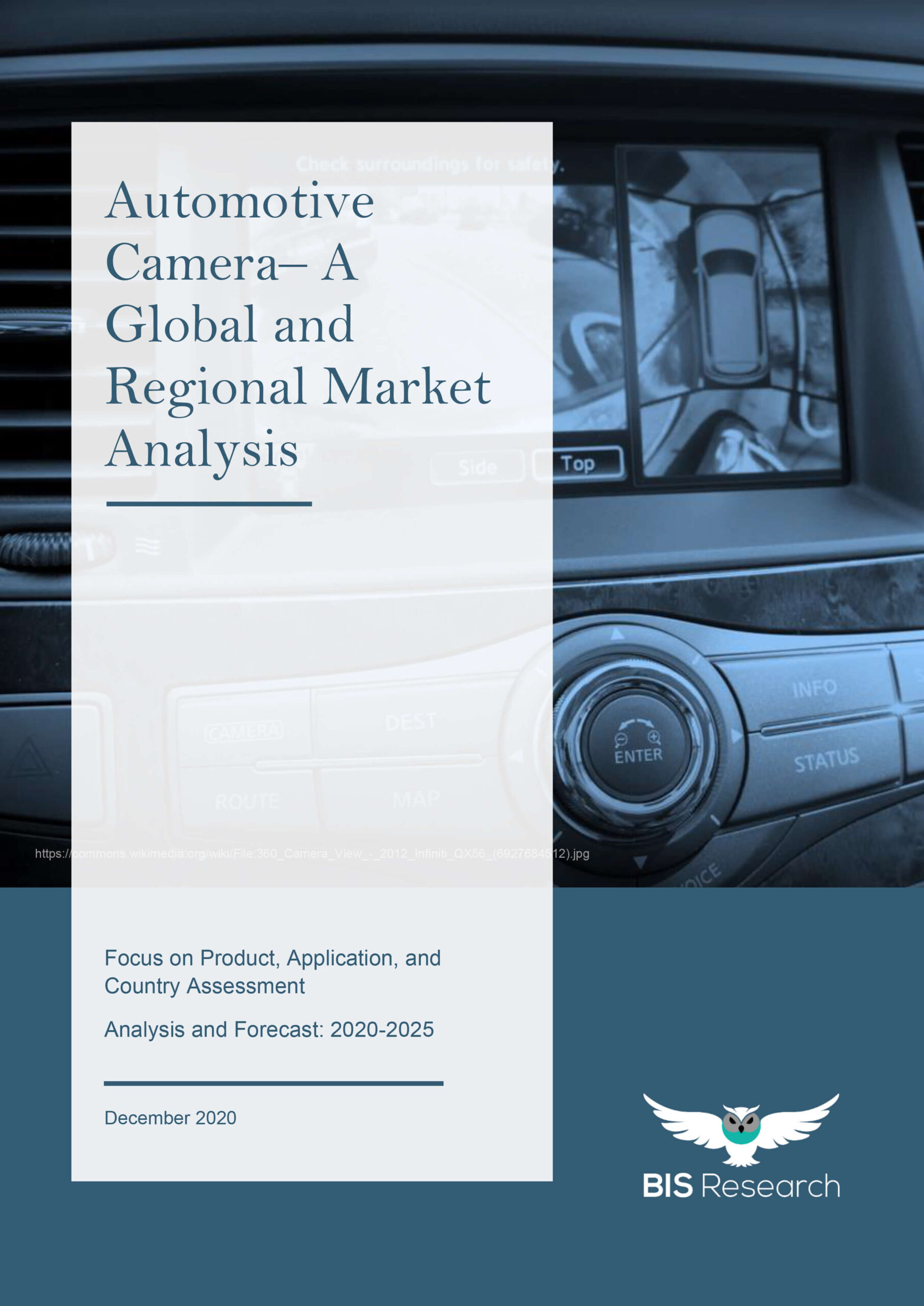Description
Market Report Coverage – Automotive Camera
Market Segmentation
• Application Type – Passenger and Commercial
• By Type – Front View, Side View, Rear View, and In-vehicle Cameras
• Technology – Infrared and Digital
• View Type- Single View and Multi View
• Level of Autonomy- Level 1, Level 2, Level 3, Level 4, and Level 5
Regional Segmentation
• North America – U.S., Canada, and Mexico
• Europe – Germany, Spain, France, and Rest-of-Europe
• Asia-Pacific and Japan (APJ) – South Korea, India, Japan, and Rest-of-APJ
• U.K.
• China
• Rest-of-the-World
Growth Drivers
• Regulations and Mandates Appreciating the Usage of Automotive Cameras
• Growing Popularity of Autonomous Vehicles
• Prevention of False Insurance Claims
• Increasing Road Accidents
Market Challenges
• Lapses in Imagery Sensors and Difficulty in Detection
• High Cost of Camera Modules
Market Opportunities
• AI-Based In-Vehicle Cameras for Advanced Driver Monitoring
• Integrating Camera and Lidar into a Single Unit
Key Companies Profiled
Ficosa International S.A., Continental AG, Denso Corporation, Hella KGaA Hueck & Co., OmniVision Technologies, Inc., Stonkam Co., Ltd., Hyundai Mobis Co. Ltd., Kappa optronics GmbH, Magna International Inc., Ricoh Company Ltd., Robert Bosch GmbH, STMicroelectronics N.V., Valeo Group, LG Innotek Co., Ltd., and Aptiv PLC
Key Questions Answered in this Report:
• For a new company looking to enter the market, which areas could it focus upon to stay ahead of the competition?
• How do the existing market players function to improve their market positioning?
• Which are the promising companies that have obtained financial support to develop their products and markets?
• How does the supply chain function in the automotive camera market?
• Which companies have been actively involved in innovation through patent applications, and which products have witnessed maximum patent applications during the period 2017-2020?
• Which product segment is expected to witness the maximum demand growth in the automotive camera market during 2020-2025?
• Who are the players that are catering to the demand for different cameras?
• How should the strategies adopted by market players vary for different product segments based on the size of companies involved in each segment?
• What are the key offerings of the prominent companies in the market for automotive cameras?
• What are the demand patterns of automotive cameras across the application areas in different regions and countries during the period 2019-2025?
Market Overview
The automotive industry is rapidly evolving on the technological front and this growth is primarily attributed to the changes in consumer preferences, and an equal push from the legislative bodies. The technological advancements include improved vehicle performance, passenger safety, communication capabilities, and driving comfort, among others. The demand for safe and luxury vehicles has increased, owing to this the automakers have started focusing on enhancing the road safety and crash avoidance. The major components of a ADAS system include cameras, radars, lidars, ultrasonic sensors, and electronic control unit (ECUs). These components in combination or distinctly perform several ADAS functions, such as adaptive cruise control, parking assistance, lane departure warning, traffic jam assist, automated emergency braking, and blind spot detection, among others. During the past few years, a visible surge is witnessed in the number of vehicles equipped with the ADAS features. In addition to ADAS, the automotive industry is also supportive and optimistic for fully autonomous vehicles, which has increased the demand for automotive cameras. Automotive cameras offer several advantages, such as the ability of cameras to detect traffic signals and differentiate color. Furthermore, cameras also aid driver at the time of parking, night vision, traffic jams, and object detection. Automotive cameras being one of the most important components of the ADAS and autonomous vehicles, finds its application almost in every level of automation.
The automotive camera market research provides a detailed perspective on the different types of products, their applications, value estimation, among others. The principal purpose of this market analysis is to examine the automotive camera market in terms of factors driving the market, restraints, trends, and opportunities, among others.
The report further considers the market dynamics, supply chain analysis, and the detailed product contribution of the key players operating in the market. The automotive camera market report is a compilation of different segments, including market breakdown by product type, application, region, and country.
The automotive camera market, based on type, has been front view, rear view, side view, and in-vehicle cameras. The rear-view segment is expected to maintain its dominance during the forecast period in automotive camera market.
The automotive camera market, based on level of autonomy, has been segmented into level 1, level 2, level 3, level 4, and level 5. The level 1 segment is expected to maintain its dominance during the forecast period in the automotive camera market.
The automotive camera market, based on view type, has been segmented into single view and multi view. The single view segment is expected to maintain its dominance during the forecast period in the automotive camera market
The automotive camera market, by application, has been segmented into passenger and commercial. The passenger segment dominated the automotive camera market in 2020 in terms of value and is expected to maintain its dominance through the forecast period.
Based on region, the automotive camera market has been segmented into Asia-Pacific and Japan, Europe, the U.K., China, North America, and Rest-of-the-World. Each region is segmented into countries. Data for each of these regions and countries is provided by product type and application.
Competitive Landscape
The automotive camera market competitive landscape consists of different strategies undertaken by key players across the industry to gain traction and market share presence. Some strategies adopted by the service providers are new product launches, business expansions, mergers, partnerships, and collaborations. Among all these strategies adopted, product launches is the popular choice of the strategy implemented in the automotive camera market. Some of the most prominent ecosystem players are Ficosa International S.A., Continental AG, Denso Corporation, Hella KGaA Hueck & Co., OmniVision Technologies, Inc., Stonkam Co., Ltd., Hyundai Mobis Co. Ltd., Kappa optronics GmbH, Magna International Inc., Ricoh Company Ltd., Robert Bosch GmbH, STMicroelectronics N.V., Valeo Group, LG Innotek Co., Ltd., and Aptiv PLC.
Some of the notable developments are:
• Continental AG launched its infrared interior camera for detecting drowsiness of passengers in February 2019.
• Ficosa International S.A. has partnered with Videantis GmbH, a vision solution provider based in Germany, in December 2017 to develop and bring forward the advance sensing technologies for automotive cameras.
• Denso Corporation established a R&D lab in Pittsburgh in April 2020 for the innovation of autonomous driving including vision sensors.



Reviews
There are no reviews yet.